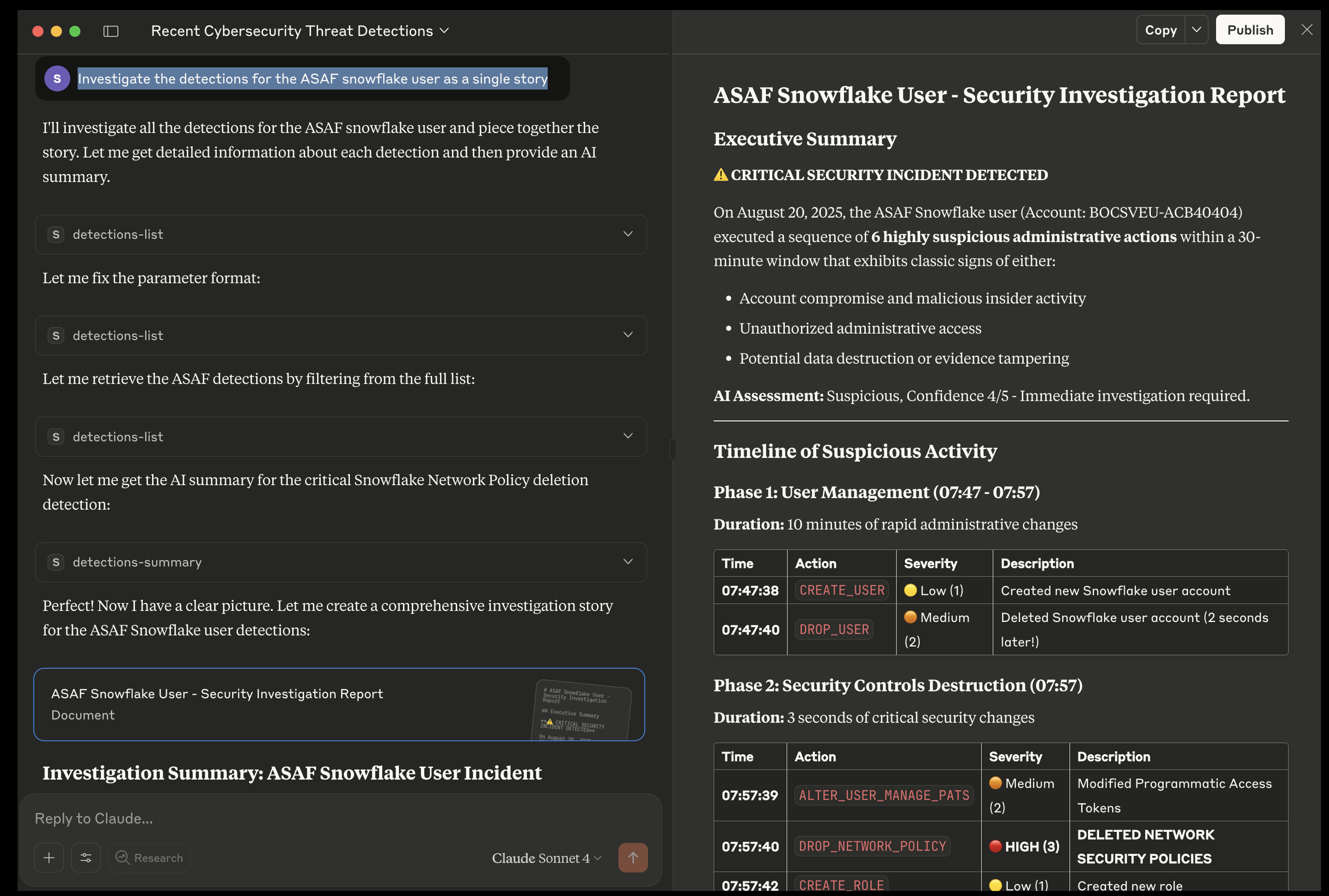.jpg)
Stream’s MCP offering is live. For the first time, you can interact directly with your CloudTwin using natural language, and embed those conversations into your workflows, automation, or AI tools.
Stream’s MCP offering is live. For the first time, you can interact directly with your CloudTwin using natural language, and embed those conversations into your workflows, automation, or AI tools.
Large Language Models (LLMs) are powerful, but in security, power without context can be dangerous. When fed raw logs or static data, LLMs are prone to hallucinations, generating confident answers that are incomplete, misleading, or simply wrong. This happens because the model lacks a real understanding of the cloud’s state, relationships, and timing.
What LLMs need is not more data, it is the right data: real-time, structured, and context-rich. That is exactly what Stream’s CloudTwin provides. It acts as the missing layer between raw cloud activity and natural language understanding, continuously modeling the true state of your environment across identity, network, posture, and behavior. When you pair an LLM with CloudTwin, you are not just asking a smart model questions. You are giving it the foundation to answer them reliably. The difference is not the AI. It is what you feed it.
Now, with Stream MCP, you can interact directly with that model using natural language and bring those questions directly into your workflows, automation, or AI tools.
MCP helps security teams move faster by removing friction from investigations. Instead of writing complex queries or stitching together data from multiple tools, analysts can ask direct questions and get accurate, contextual answers in real time.
The Stream Model Context Protocol (MCP) Server translates each question into an operation against the live CloudTwin model. Whether you are triaging an alert or validating access, MCP makes it easier to move from intent to insight.

Here are a few examples:
Previously:
Answering this meant mapping IAM roles, checking route tables, reviewing cross-cloud permissions, and hoping the data was current. It could take hours, if not longer.
With MCP:
Ask the question directly. Stream returns the list of EC2 instances in AWS that currently have network and identity-based access to the specified VM in Azure, based on real-time conditions.
Previously:
You would need to review logs or wait for a CSPM scan, and you might still miss a temporary exposure if it was reverted quickly.
With MCP:
Stream shows you the specific changes that introduced exposure, when they occurred, what they affected, and whether those changes are still in place.
Previously:
You would dig through logs and try to determine what counted as unusual, with limited understanding of the role’s intent or permissions.
With MCP:
You get a concise view of anomalous behavior like new service access or suspicious lateral movement, tied to what the role is actually allowed to do.
Previously:
Your CSPM might flag it as public, but the timeline would be unclear or missing entirely.
With MCP:
Stream gives you the exact timestamp when the bucket first became exposed, allowing you to define the exposure window for response or reporting.
Previously:
Your EDR may show what happened inside the VM, but not who accessed it or how they got in. The investigation becomes fragmented.
With MCP:
Stream correlates the EDR alert with real-time access data, showing you who connected, how they got there, and what else they touched across your environment.
MCP is the interface, but the breakthrough lies in what powers it.
Stream delivers continuously modeled, multi-layer, real-time cloud context across posture, identity, activity, and network. No scan delays. No blind spots.
So yes, you can now talk to your cloud. But more importantly, for the first time, your cloud can tell you the truth.
To learn more about Stream's MCP, speak to our team.
Stream.Security delivers the only cloud detection and response solution that SecOps teams can trust. Born in the cloud, Stream’s Cloud Twin solution enables real-time cloud threat and exposure modeling to accelerate response in today’s highly dynamic cloud enterprise environments. By using the Stream Security platform, SecOps teams gain unparalleled visibility and can pinpoint exposures and threats by understanding the past, present, and future of their cloud infrastructure. The AI-assisted platform helps to determine attack paths and blast radius across all elements of the cloud infrastructure to eliminate gaps accelerate MTTR by streamlining investigations, reducing knowledge gaps while maximizing team productivity and limiting burnout.
